Wasatch Photonics VPH Gratings Look to the Stars
>> Nightly, all over the world, observatories open their domes to collect light from the far reaches of the universe. The telescopes within diligently condense these precious photons for careful analysis by instruments like spectrographs, which further break down that light into its component colors. Over the past 20 years, Wasatch Photonics has provided VPH gratings used in astronomical spectrographs for telescopes ranging from 1.3 to 11 meters in size, installed all over the world. We’ve seen telescopes get larger, projects get more complex, and the discoveries more exciting. Yet one thing hasn’t changed – our commitment to being a part of this work and the questions it seeks to answer.

Read on to see where and how Wasatch VPH gratings are being used in astronomical spectrographs, with references that track the journey of our gratings in each instrument, from concept to characterization. While projects often take years of design, waiting on funding, and painstaking manufacture before they see starlight, the answers they yield make it all worth it. That’s why we give each stage of the process our meticulous care and attention, working with the project teams to ensure every detail is right, and every parameter is optimized.
Click here to find out more about our large format grating capabilities for astronomy
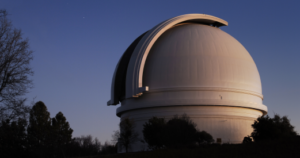 CWI – Hale Telescope – California
CWI – Hale Telescope – California
- Spectrograph: Cosmic Web Imager (CWI)
- Telescope: Hale Telescope, 5.1 m
- Location: Palomar Observatory, San Diego County, California
Project References
- Matuszewski, Mateusz et al., “The Cosmic Web Imager: an integral field spectrograph for the Hale Telescope at Palomar Observatory: instrument design and first results“, Ground-based and Airborne Instrumentation for Astronomy III. Vol 7735 International Society for Optics and Photonics, 2010.
Learn more about this landmark telescope’s upgrade
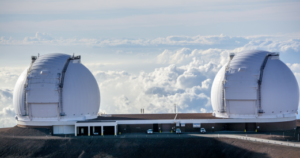 KCWI – Keck II Telescope – Hawaii
KCWI – Keck II Telescope – Hawaii
- Spectrograph: Keck Cosmic Web Imager (KCWI)
- Telescope: Keck II Telescope, 10 m
- Location: Keck Observatory, Mauna Kea, Hawaii
Project References
- Morrissey, Patrick, et al. “The Keck Cosmic Web Imager Integral Field Spectrograph.” The Astrophysical Journal 864.1 (2018): 93.

LAMOST-LRS – LAMOST – China
- Spectrograph: Low Resolution Spectrographs (LRSs)
- Telescope: Large Sky Area Multi-Object Fiber Spectroscopic Telescope (LAMOST), 4 m (primary mirror) / 6 m (secondary mirror)
- Location: National Astronomical Observatories, Xinglong Station, China
Project References
- Zhu, Yongtian, et al. “A multipurpose fiber-fed VPHG spectrograph for LAMOST.” Ground-based and Airborne Instrumentation for Astronomy. Vol. 6269. International Society for Optics and Photonics, 2006.
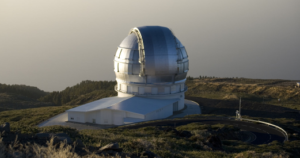
MEGARA – GTC – Spain
- Spectrograph: Multi-Espectrógrafo en GTC de Alta Resolución para Astronomía (MEGARA)
- Telescope: Gran Telescopio Canarias (GTC), 10.4 m
- Location: Roque de los Muchachos Observatory, La Palma, Spain
Project References
- de Paz, A. Gil, et al. “MEGARA: a new generation optical spectrograph for GTC.” Ground-based and Airborne Instrumentation for Astronomy V. Vol. 9147. International Society for Optics and Photonics, 2014.
- García-Vargas, María Luisa, et al. “Project management for complex ground-based instruments: MEGARA plan.” Modeling, Systems Engineering, and Project Management for Astronomy VI. Vol. 9150. International Society for Optics and Photonics, 2014.
- de Paz, A. Gil, et al. “MEGARA, the new intermediate-resolution optical IFU and MOS for GTC: getting ready for the telescope.” Ground-based and Airborne Instrumentation for Astronomy VI. Vol. 9908. International Society for Optics and Photonics, 2016.
- Martínez-Delgado, I., et al. “MEGARA: large pupil element tests and performance.” Advances in Optical and Mechanical Technologies for Telescopes and Instrumentation II. Vol. 9912. International Society for Optics and Photonics, 2016.
- Ortiz, R., et al. “MEGARA anti-reflective coatings: theoretical and observed throughput estimations.” Advances in Optical and Mechanical Technologies for Telescopes and Instrumentation III. Vol. 10706. International Society for Optics and Photonics, 2018.
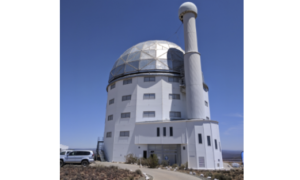
RSS-NIR – SALT – South Africa
- Spectrograph: Robert Stobie Spectrograph Near Infrared Instrument (RSS-NIR)
- Telescope: Southern African Large Telescope (SALT), 11 m
- Location: South African Astronomical Observatory (SAAO), Sutherland, South Africa
Project References
- Wolf, Marsha J., et al. “Project status of the Robert Stobie spectrograph near infrared instrument (RSS-NIR) for SALT.” Ground-based and Airborne Instrumentation for Astronomy V. Vol. 9147. International Society for Optics and Photonics, 2014.
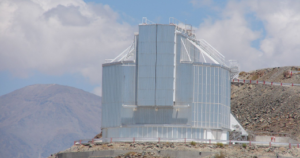
WINERED – Various Telescopes
- Spectrograph: Warm Near-Infrared High-Resolution Spectrograph with Very High Throughput (WINERED)
- Telescope: Various (compatible with any telescope with Nasmyth focus slower than f/11)
- Araki Telescope, 1.3 m, Koyama Astronomical Observatory, Kyoto, Japan
- New Technology Telescope (NTT), 3.58 m, La Silla Observatory, La Higuera, Chile
- Magellan Clay Telescope, 6.5 m, Las Campanas Observatory, Atacama, Chile (planned)
Project References
- Yasui, Chikako, et al. “Warm infrared Echelle spectrograph (WINERED): testing of optical components and performance evaluation of the optical system.” Ground-based and Airborne Instrumentation for Astronomy II. Vol. 7014. International Society for Optics and Photonics, 2008.
- Otsubo, Shogo, et al. “First high-efficiency and high-resolution (R= 80,000) NIR spectroscopy with high-blazed Echelle grating: WINERED HIRES modes.” Ground-based and Airborne Instrumentation for Astronomy VI. Vol. 9908. International Society for Optics and Photonics, 2016.
- Ikeda, Yuji, et al. “High sensitivity, wide coverage, and high-resolution NIR non-cryogenic spectrograph, WINERED.” Ground-based and Airborne Instrumentation for Astronomy VI. Vol. 9908. International Society for Optics and Photonics, 2016.
- Ikeda, Yuji, et al. “Very high-sensitive NIR high-resolution spectrograph WINERED: On-going observations at NTT.” Ground-based and Airborne Instrumentation for Astronomy VII. Vol. 10702. International Society for Optics and Photonics, 2018.
Learn more about the travels of WINERED spectrograph
Let’s collaborate on your next spectrograph
Are you in the concept, design, or build stage for a new instrument? No project is too small, and only gratings >>30 cm are too big! We manufacture VPH gratings for spectrographs for wavelengths 320-2500 nm, and with dispersion 150-6000 lines/mm. With 20 years of experience and a long-term commitment to the astronomy community, we are here to go the distance with you, and get every detail right. Contact us today!


